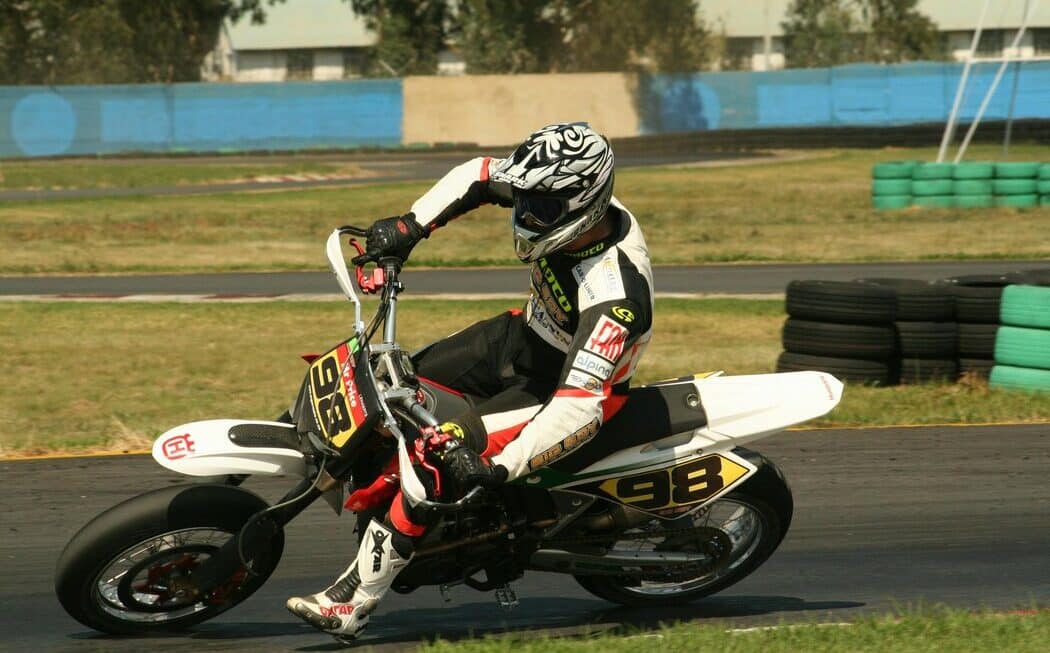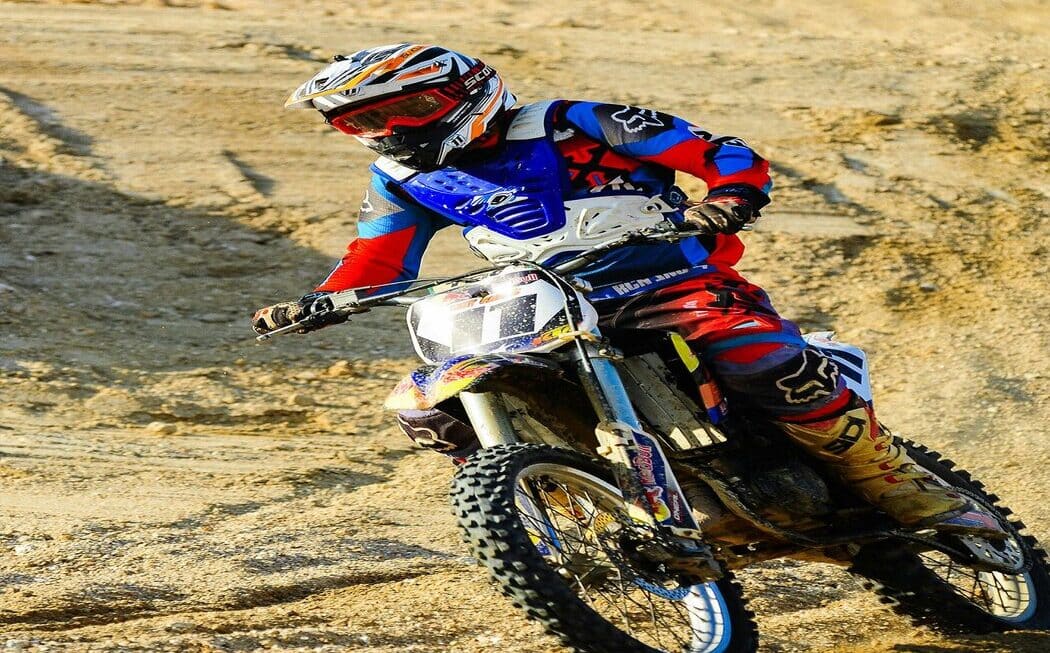If you own a four-stroke dirt bike, you may be wondering how often should you rebuild a 4-stroke dirt bike. The answer to this depends largely on the amount of usage the dirt bike is put through. Generally speaking, if your four-stroke dirt bike is used only twice a year for short rides, rebuilding will only need to happen every two or three years. However, if your four-stroke dirt bike is regularly ridden for extended lengths of time and over rough terrain, then more frequent maintenance will be required to keep it functioning properly.
When it comes to starting a four-stroke dirt bike, it can seem daunting at first but with practice and proper maintenance, each start will become easier and smoother than the previous one. Make sure you check the spark plugs, air filter, and fuel before attempting any ride. These elements can affect both how easily the engine starts as well as how well it performs during use. It’s also important to pay attention to the engine temperature. If the temperature ever becomes too hot during your ride, make sure to take a break and let it cool down before continuing. Otherwise, it could result in serious damage that would require an engine rebuild.
Signs of a 4-stroke Engine Rebuild
When you own a four-stroke dirt bike, it’s important to be aware of the signs that indicate your engine needs a rebuild. These signs don’t necessarily mean your engine has gone bad completely. They may present themselves as decreased performance or more frequent maintenance requirements. Knowing when it’s time for an engine rebuild can help keep your bike running optimally for many miles down the road.
Some of the signs are as follows:
High Consumption of Oil
High oil consumption is an issue that can present itself in an engine. It happens when the engine expends too much oil and can cause a range of problems, from pushing up your oil costs to creating more pollution. There can be several causes behind this and it is important to recognize them in order to address the issue.
One of the primary causes of higher oil consumption is a blocked crankcase breather tube. This blockage prevents the air from being able to escape from the crankcase which leads to an increase in oil usage, as it does not have anywhere else to go. Of course, this is only likely if all seals and valves are functioning correctly. In other cases, worn piston rings, valves or seals may lead to increased levels of slippage which then produces more waste products that must be burnt off along with more fuel and consequently more oil loss overall. In order to get your oil use back down you will therefore need to have these inspected if you suspect they are at fault for your higher consumption levels.
Smoky Exhaust
It is very important to monitor the exhaust of your dirt bike for any signs of smoke. One type of smoke you should particularly look out for is white smoke, which usually carries a sweet scent and signals a blown head gasket. This can occur if there is coolant present in the combustion chamber, as it will burn away when the engine reaches high temperatures. Check to see if your bike uses any coolant or antifreeze liquid beforehand to catch this issue before it becomes worse.
Another kind of smoke that should be monitored is blue smoke, which means oil is being burned from somewhere within the engine system. This most likely occurs when oil gets past failing piston rings or valve stems and into the combustion chamber. To fix this problem, one may need to replace valves, seals or piston rings depending on where the leak took place. If left unchecked, all these issues can result in further damage to other components such as their valves and cylinders.
Difficult to Start the Dirt Bike
When riding a dirt bike, starting the engine is usually the first and most crucial step. If you find that your dirt bike’s engine is struggling to start when you kick it, this could signal something is wrong with your bike. It may also require more effort than normal to get it started.
There are several common causes associated with difficulty in starting your dirt bike’s engine. Worn-out valves can decrease fuel compression, causing the engine to struggle to start and run properly. Lack of proper carburetion can also lead to starting issues, since the carburetor helps ensure that fuel is being fed at the correct rate into the feed line of your motor. Other possible causes include fouled-up spark plugs, improper timing alignment of the camshaft and crankshaft, or a faulty starter motor. A qualified mechanic should be able to diagnose and repair any electrical problems or other issues preventing your engine from running smoothly and reliably.
Noise
Noise is one of the most common problems riders may experience when riding a dirt bike. In some cases, the noise can be an indicator of an issue with the machine that needs attention. One type of sound to be wary of is a loud metallic noise coming from the cam chain. This can indicate that the chain has a lack of tension or resistance to the bike’s chain. If left unattended, this lack of tension can cause accelerated wear and tear on the valves and pistons which could lead to further damage down the line.
Another sound to watch for is a consistent knocking coming from either worn-out pistons or valves. This ominous sound typically only gets worse over time as it torpedoes through the engine without proper maintenance, so make sure to address it immediately if heard as opposed to putting it off until later on. It can easily be remedied by either replacing worn parts outright or simply tightening up any loose parts that need adjusting; both solutions are fairly simple but will help reduce excessive noise coming from your dirt bike’s engine.
Engine Oil
Engine oil is an important part of maintaining the health of your dirt bike’s engine. It is a simple and effective way to determine whether or not something is wrong with the motor. By taking a look at the engine oil, you can easily detect telltale signs that indicate any potential issues.
One commonly seen sign is milky-looking oil, which could mean that water has mixed into the oil system due to a leaking water pump seal. This could be caused due to most frequently seen causes such as a leaky head gasket or excessive condensation build-up in the crankcase. The other common concern is black-colored oil, which could indicate that your dirt bike needs some serious maintenance since this often indicates more combustion byproducts rising and entering the oil stream due to worn piston rings. This could be prevented if these components are regularly checked and serviced.
Low Power
Low power due to low compression is a common issue with four-stroke dirt bikes. When the compression of your engine is too low, it can result in poor performance and eventually lead to further mechanical damage. To check for low compression, you can do a compression test by using a special tool or you may feel it when you kick start as there will be less resistance than usual.
In some cases, the cause of low compression can be fixed simply by cleaning your carburetor or re-adjusting the valves and piston rings with a shim kit. However, if these methods fail, you’ll likely need to have an entire top-end engine rebuild to fix the issue. This involves removing the cylinder head from the frame and installing new pistons, piston rings, valves, and gaskets to restore proper compression levels and optimal performance for your dirt bike.
What to Do if You Notice Any of These Signs?
A leak-down test is a valuable way to help diagnose your dirt bike’s engine health and identify any signs of improper sealing in the cylinders. This test involves mounting a pressure gauge on the engine, usually while the piston is at TDC and all valves are closed. You can then measure the amount of air trapped inside the cylinder, as well as how much air escapes from the combustion chamber. The difference between these two readings will indicate how well your bike is doing. Racing bikes should have leakage of 0-5%, whereas a standard dirt bike should be expected to have up to 15%.
If you notice any signs that may indicate inadequate sealing or a decrease in performance, it’s best to perform a leak-down test and refer to industry standards for acceptable limits before considering other potential solutions. The results will determine whether your bike needs further repair or if something else is causing it to operate poorly. Performing this test regularly will ensure that your engine remains healthy and efficient over time.
When Should You Rebuild Your 4-stroke Dirt Bike?
Rebuilding your four-stroke dirt bike is an essential part of taking care of it in the long run and will provide you with optimal performance during each ride. For casual riders, if you don’t exert much strain on your four-stroke engine, you should consider rebuilding it after 100 hours of riding time. However, for a bit more caution some builders may want to start rebuilding their four-stroke engine at 80 hours instead.
On the other hand, if you are an avid racer who needs to squeeze out every ounce of power from your bike then rebuilding at 25 to 30 hours might be best for you. Keep in mind that different models of dirt bikes have different maintenance requirements so make sure to reference your dirt bike’s instruction manual when deciding on when rebuilding should take place. Additionally, if you recently went on a particularly strenuous ride then rebalancing may need to occur even earlier depending on the severity. Rebuilding ensures that your four-stroke dirt bike is running optimally and ready for action!
Is it Hard to Rebuild a 4-stroke Engine on a Dirt Bike?
Rebuilding a four-stroke engine on a dirt bike is not impossible, even if you don’t have any mechanic skills. Because the process of burning air-fuel mix for a four-stroke is more thorough than two-stroke, some more complex parts and pieces need to come together for the engine to work properly. Therefore, you’ll need to take an extra bit of time to learn how to disassemble and then reassemble everything. To do this successfully, make sure you have your manual handy as it will give you helpful guidance throughout the entire process.
Moreover, with enough patience and discipline, rebuilding a four-stroke on your dirt bike shouldn’t be too difficult either. Additionally, taking some extra time to familiarize yourself with each part and its corresponding function might also help in the long run. In short, with some good guidance, understanding, and dedication; rebuilding a four-stroke engine itself isn’t hard at all!
Conclusion
Rebuilding your four-stroke dirt bike’s engine is a great way to ensure that it will last for many years to come. The timing of when you rebuild the engine is determined by how it is being used and how often you use it. Generally, if you ride your bike lightly, you need to rebuild the engine every 100 hours. If your bike experiences a lot of hard riding, then the rebuild needs to take place every 25-30 hours. It may even be lower than this depending on how intense your riding style is.
When rebuilding an engine, there are some common signs such as difficulty in starting or misfires indicating potential issues with the motor. A leak-down test can also be done to check for any problems with the engine and determine whether it needs a complete overhaul or just minor repairs are required. By regular monitoring and maintenance, you ensure that your dirt bike runs smoothly and reliably for years to come.



